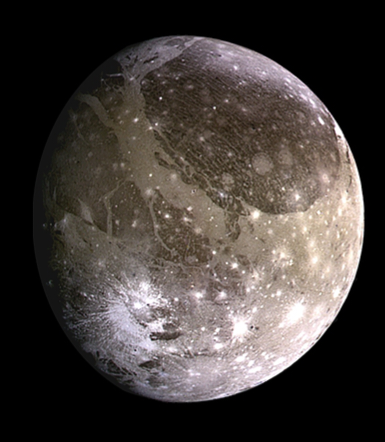*This post may contain affiliate links. This means we may make a commission if you purchase an item using one of our links*
USA is the fourth largest country on Earth, while Ganymede is the largest moon in our Solar System. Ganymede has a surface area of 87.2 million sq. km whilst the United States is far lesser at 9.83 million sq. km. In regards to volume, USA’s is 393.4 million cubic km whereas Ganymede’s is 76.6 billion cubic km.
For a more detailed look at each body and their size differences, continue reading for more information below.
How Big Is USA?

The United States Of America has a total surface area of 9,833,516 sq. km, which makes it the third largest country in the world. It has a surface twice the area of the European Union’s land, and it is larger than the 107 smallest countries in the world combined.
The largest state in the USA is Alaska, possessing a surface area of 1,070,000 sq km; Texas and California follow at 430,000 sq km and 260,000 sq km, respectively.
These areas represent a flat two-dimensional area, but if we want to compare the size of the USA and Mars, then we need to know the volume.
Earth’s crust ranges from around 5 to 70 km in thickness. Generally, this crust is thicker under the continental land, which averages 40 km. Taking this average and multiplying it by the surface area of the USA, we can calculate that the rough volume of the USA is around 393,340,640 cubic kilometers.
This might sound like a lot, but it still falls short of a variety of other celestial objects where for example the Moon that has 21.9 billion cubic kilometers of volume. Even if we take Earth’s crust at its thickest (70 km), the total volume of the USA is still not comparable to most celestial bodies in outer space.
The actual crust will vary as USA is a diverse country with dramatic variances in terrain. This country’s three most significant mountain ranges are the Appalachians, the Rockies, and the Sierra Nevada which adds altitude to its overall size but, it isn’t so as to make a major difference in the surface or volume of the country as a whole.
How Big Is Ganymede?

Ganymede is the largest moon of Jupiter and the largest object in our solar system not to be properly classified as a planet. It is the only moon with a magnetic field of its own, and one of the few bodies in our solar system known to possess a magnetosphere.
Ganymede has a diameter of 5,262 km and a surface area of 87,200,000 sq. km. Its diameter is slightly larger than USAs, but its surface area is far vaster because the moon is spherical rather than flat. This gives it an impressive volume of 76,600,000,000 cubic km.
This moon is a source of fascination for scientists, with Hubble observations suggesting it may possess an underground ocean. Potentially, this ocean could contain more water than all the water on Earth combined with a depth of up to 100 km – ten times deeper than the oceans on Earth. This ocean is buried beneath a 150 km ice crust.
The terrain of Ganymede falls into two distinct categories: large, bright ridged regions and older, darker ground. This terrain pattern suggests the moon could have been under significant tension from global tectonic processes.
Galileo Galilei first discovered the moon in January 1610; significant because it was the first time scientists observed an object orbiting a planet other than Earth. And this helped us recognize that the Sun lies at the center of our Universe rather than the Earth.
Ganymede formed from leftover gas and dust that remained after Jupiter’s formation, which means that it is roughly the same age as our solar system – 4.5 billion years old.
Three main layers comprise Ganymede; a metallic core, a surrounding mantle of rock, and a top layer of ice. Computer models simulating Ganymede’s makeup show that more ice and oceans could be sandwiched between these main layers. The Hubble Space Telescope also discovered that the moon might have a thin atmosphere of oxygen.
Ganymede is the seventh moon from Jupiter, which orbits at around 1.070 million kilometers away from its planet. This means that Ganymede takes roughly seven Earth days to orbit its planet. While Ganymede is vast – larger than the planet Mercury – it only possesses half the mass of our closest planet to the Sun, classifying it as a low-density object.
Summary
Ganymede is bigger than USA in every measure, from diameter, surface area and most definetely in regards to volume. After all it is the biggest moon is our solar system, even eclipsing Mercury isn size whereas USA is both a flat plane and the fourth largest country on Earth.
Although USA may be bigger than some of the smaller moons within our solar system, it isn’t comparable at all to Ganymede’s sheer bulk.

